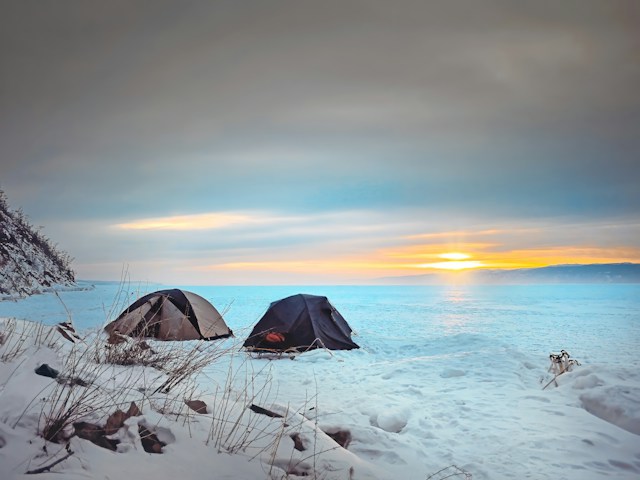Winter camping offers a unique and magical experience for outdoor enthusiasts willing to embrace the chill. Contrary to popular belief, with proper planning and the right gear, winter camping can be a rewarding adventure that unveils the pristine beauty of snow-covered landscapes. In this comprehensive beginner’s guide, we’ll navigate through essential tips and tricks to ensure a safe, comfortable, and memorable winter camping expedition.
Choosing the Right Location:
Selecting the perfect location is the first step in ensuring a successful winter camping trip. Look for campgrounds that remain open year-round or explore backcountry options for a more secluded experience. National parks and forests often have designated winter camping areas, providing a picturesque backdrop for your cold-weather adventure.
Investing in Quality Gear:
The key to a successful winter camping experience lies in investing in high-quality gear designed for cold conditions. Start with a four-season tent that can withstand snow and wind, ensuring it is properly pitched and secured. Your sleeping bag should be rated for sub-zero temperatures, and using a sleeping bag liner can add extra insulation. A well-insulated sleeping pad is essential to prevent the cold ground from sapping your body heat. Dressing in layers with thermal clothing, waterproof outer layers, and insulated boots will keep you warm during your outdoor pursuits.
Mastering the Art of Layering:
Layering is crucial to staying warm in winter conditions. Begin with a moisture-wicking base layer to keep sweat away from your skin, add an insulating layer for warmth, and finish with a waterproof and windproof outer layer to protect against the elements. Adjust your layers as needed to regulate your body temperature, preventing overheating and perspiration.
How to Stay Warm in Your Tent:
Staying warm inside your tent is a critical aspect of winter camping comfort. Start by investing in a high-quality, cold-rated sleeping bag that suits the expected temperatures. A four-season tent designed to withstand winter conditions is essential, providing adequate insulation and protection against wind and snow. Use a sleeping bag liner for added warmth and consider wearing thermal clothing, even inside the tent. Insulate yourself from the cold ground with a quality sleeping pad. To enhance warmth, place a hot water bottle or a thermal flask filled with warm liquid inside your sleeping bag before bedtime. This simple trick how to stay warm in a tent throughout the night.
Nutrition and Hydration:
In cold weather, it’s easy to underestimate the importance of staying hydrated. Drink plenty of water, as dehydration can occur even in cold temperatures. Additionally, consume high-energy foods that provide sustained fuel for your body. Pack nutrient-dense snacks and warm meals that are easy to prepare, like dehydrated camping meals. Eating well and staying hydrated will help regulate your body temperature and keep you energized during your winter adventure.
Safety First:
Winter conditions can present unique safety challenges, so prioritize safety during your winter camping trip. Familiarize yourself with the signs of hypothermia and frostbite, and know how to respond if someone in your group exhibits symptoms. Carry a well-stocked first aid kit and be aware of your surroundings, including potential hazards like avalanches. Follow Leave No Trace principles and be mindful of fire safety, especially when dealing with winter campfires.
Conclusion:
Winter camping may pose its challenges, but with the right knowledge and preparation, it opens the door to a world of breathtaking beauty and unique experiences. By following the tips outlined in this beginner’s guide, you’ll be well-equipped to embark on your winter camping adventure, creating lasting memories surrounded by the tranquility and wonder of snow-covered landscapes. So, gear up, embrace the chill, and discover the magic of winter camping for yourself!

